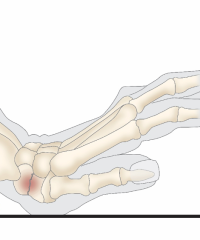Why do hands hurt when playing a musical instrument?
Recent posts
Do you have any doubt?
My goal is to help them regain not only function, but also the quality of life they deserve. If you are experiencing pain, movement limitations or injuries to your hands, I am here to offer you my experience in the field. Together, we can chart a path to recovery and restoration of vitality to your hands.
Categories
Playing any type of instrument is a demanding task, requiring the development of skills both during learning and practice. Like athletes, musicians may have musculoskeletal pain, peripheral nerve problems or involuntary movements (dystonia).
Regarding the types of musical instruments, we can say that stringed instruments (violin, piano, guitar, bass, harp, among others) can cause 68% more musculoskeletal ailments or symptoms in the hands than wind instruments (saxophone, tuba, flute, clarinet, trumpet, among others). The most common affected parts are the wrist with 43%, the forearm with 36% and the fingers with 34%.
Factors that can trigger musculoskeletal ailments in the hands
- Repetitive intensity during rehearsals.
- Increased number of rehearsals before an audition, event, or exam.
- Recent changes in instructor or teacher.
- Carrying an instruments for long periods of time.
- Poor adaptability to the instrument.
- Poor technique and joint laxity.
What symptoms can appear?
- Pain.
- Muscular weakness.
- Loss of control and stiffness during or after rehearsing with an instrument, however, pain can also occur at night or at rest.
- Edema (swelling) of the painful areas.
What treatment is recommended?
About 35% of musicians or music students do not ask for help when they start feeling a musculoskeletal ailment in their hands, relying on self-medicating creams or gels to help relieve the pain. This can be caused by a high psychosocial pressure and sometimes misinterpreted by students or the art community as the result of a poor technique. Some instructors and students profess the phrase “no pain, no gain” and believe that this must be the price paid for excellence.
Therefore, due to above reasons it is important for musicians to know the anatomy and physiology of the hand and wrist, in order to develop a proper body technique, avoiding possible muscle pain. In the same way, doctors must be trained to recognize and treat this type of discomfort and ailments, since, unfortunately, the medical literature reports that only 28.2% of doctors provide satisfactory help to this type of patient.

Currently the most effective treatment is aimed at prevention, which includes the following activities:
- Carry out an adequate technique.
- Proper use of each instrument (how to carry it, how to bear the weight, finger or perform the percussion).
- Perform appropriate warm-up exercises before playing any instrument.
- Active breaks during practice as well as an adequate balance of hours for rehearsals.
- When it comes to some wind instruments, such as the saxophone, it is advisable to use elements that prevent a bad posture, such as a harness.
- For keyboard instruments, such as the piano, the position of the fingers is a very important element. Playing the piano with the fingers curled up is a harmful habit for the hands, while maintaining the natural curvature of the hands is the correct and healthy way to work with the fingers.
The use of medications can help in the acute phase of pain, but the measures mentioned above are essential to prevent the pain from reappearing or get fully resolved.


















